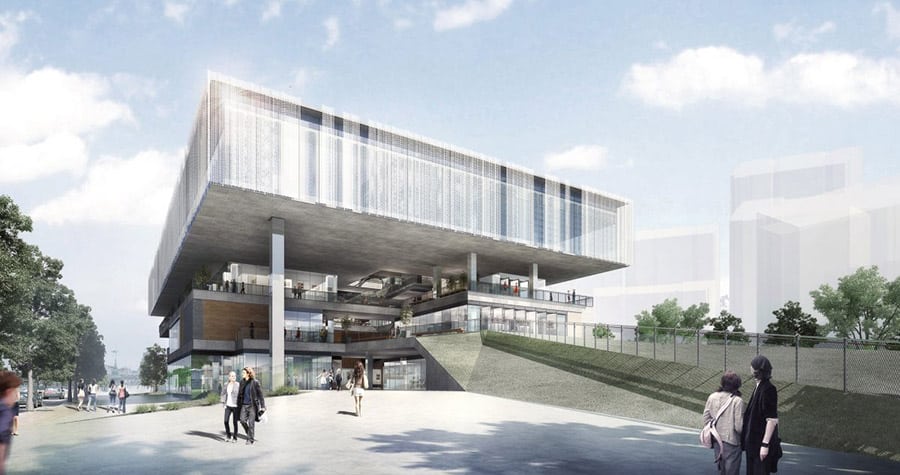
Benoy transformed a former power plant into a green arts centre
The eastern Chinese city of Hangzhou has sought to raise its profile as a centre of both innovation and culture, equally notable for its UNESCO World Heritage sites and its tech credentials as home to e-commerce giant Alibaba.
Within this metropolis of nearly 10 million people, global architecture practice Benoy is leading a plan to convert a former power plant site into a green arts complex as Hangzhou prepares to host the 2022 Asian Games. The redevelopment project is part of an urban renewal effort in the central district of Gongshu that is ramping up investment in culture-related projects to enhance community and create a hub for arts, theatre and sports.
The 14,000 square metre art centre forms an extension to the upcoming Joy City, a Benoy-designed mixed-use landmark. Slated to open at the end of the year, the Hangzhou Canal Art Center provides insights on how to respect the industrial heritage of a site while creating a new type of flexible community space that merges into the surrounding cityscape.
Merging Indoor and Outdoor Space in Nod to Industrial Past
Benoy was appointed to handle the architecture, interior design and landscape concept for the Hangzhou Canal Art Center, with a brief to maintain a connection to the site’s past. Reflecting the evolution of the site from a once-functioning thermoelectric plant, Benoy chose industrial materials including concrete, steel and brick elements to build the new cultural destination.
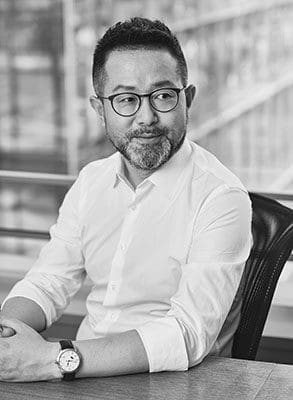
Qin Pang, head of Benoy’s Shanghai studio
In keeping with the industrial heritage of the structure, the façade is mainly composed of plain concrete with weather-resistant steel plates, wood and metal mesh. The complex also uses a green slope which connects the ground floor and second floor, physically engaging the old heritage park into the indoor space of the new building.
To make the one-time production facility into a community hub, Benoy decided to break down the massing of the building, mixing public space into the structure, and incorporating multiple entrances, courtyards, and semi-open spaces to allow people to circulate freely through the development. Ample natural lighting, particularly in the atrium space, helps blur the boundaries between the interior and the surrounding landscape.
“The Hangzhou Canal Art Center sets a new precedent for our studio for how outdoor spaces and landscape can infiltrate the indoors,” commented Qin Pang, a Benoy director and head of the firm’s Shanghai studio. “The concept also works the other way around, with the indoor spaces extending to the outdoor area.”
Arts Hub Leverages Neighbouring Mall
Designed to serve as a community magnet, the arts complex features a small theatre that uses flexible seats to allow for all types of performances, from small improvisational acts to conferences. The venue can be set for other uses including drama clubs, arts training, dance training, and as a small exhibition space.
The third floor of the building houses a two-storey shared space designed for small parties, product launches and movie clubs. “The design concept of the entire facility is to encourage communication and create flexibility of public space, enabling sharing, sightseeing, and gathering to happen anytime and anywhere,” noted Pang.
The project is developed by Joy City Property, an arm of state-owned COFCO Group, in tandem with Hangzhou City Gongshu District Chengzhong Village Redevelopment Construction. The neighbouring Joy City shopping mall, which is scheduled to open from August, integrates 145,000 square metres of retail space connected to a new waterfront,three office towers serviced apartment tower.
The two Joy City-developed projects sport completely separate designs but have complementary functions, with Joy City specialising in retail and food and beverage offerings, while the adjacent building aims to become a locus of arts, performance and leisure. In addition, the Hangzhou Canal Art Center will benefit from Joy City’s public transportation system, underground parking and green travel facilities, such as bicycle parking spots.
Benoy Helps Put Hangzhou on the Map
Together, the art centre and mixed-use complex form an integral part of an ambitious regeneration effort in Gongshu district, where the government is planning 108 cultural development projects over the next three years alone. Themed around the Grand Canal – a historic waterway running from Hangzhou to Beijing that the district straddles – the urban blueprint calls for a Grand Canal Central Park, Grand Canal Grand Theater, and Grand Canal Asian Games Park to be opened by 2022, with further projects envisioned for the future including a research institute and creative industry park.
Benoy’s art centre effort in the capital of Zhejiang province parallels a redevelopment project in eastern China’s Nanjing, where the design studio is transforming a set of century-old ice storage warehouses into a contemporary retail and cultural scheme. For the 150,000 square metre waterfront project, Benoy is harnessing the industrial legacy of the site by alternating new glass and metal structures resembling ice cubes with existing heritage buildings.
“In both cases, by respecting the original industrial elements, we can create harmony between the surrounding environment and the new construction,” commented Pang.
The Hangzhou Canal Arts Center in Pictures
This sponsored feature was contributed by Benoy. More information on Hangzhou Canal Art Center is available here,.
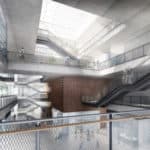
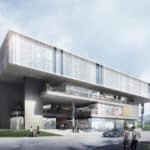
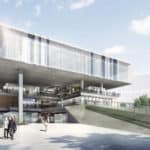
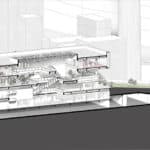
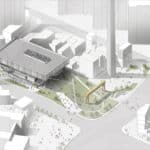
Leave a Reply